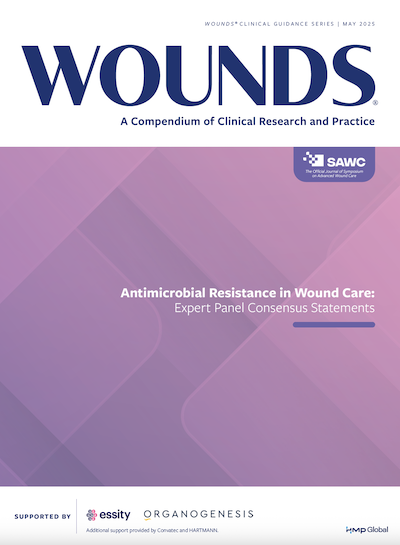Discussing the Cost-Effectiveness of dHACM Allografts in Lower Extremity Diabetic Ulcers
In this video, Martha R. Kelso, RN, HBOT, remarks on a study examining the cost-effectiveness of dHACM allografts compared to standard of care in the treatment of lower extremity diabetic ulcers.
This video is part 1 of a 3-part series of videos on dHACM allografts in lower extremity diabetic ulcers. For additional content, read the Advances article here.
Transcript:
Hi, thank you for inviting me. I'm excited to talk to you guys about this groundbreaking study. I'm Martha Kelso. I'm the CEO and founder for Wound Care Plus LLC. We're one of the Midwest's largest mobile wound companies that service a lot of the outpatient extended care facilities. Thanks for having me.
A little bit of background on this study is we decided to pull basically the Medicare database. We wanted to do a retrospective cohort study of these Medicare patients that had wound care, and usually lower extremity wounds, and we pulled that from 2015 to 2019. That equates to almost 11 million patients in that sample size.
From there, as we obviously do with most research studies, we have to pare down the data. And so, you'll find in the article, we actually talk about our inclusion/exclusion criteria, but the bottom line is we wanted to see how advanced therapies, meaning synthetic skin grafts or cellular- [and/or] tissue-based products affect the quality outcomes, and even the finances, when people get access to advanced therapy sooner versus delay in treatment.
We also, then, took it one step further and said, gosh, if they do get advanced treatment, are they following standard of care? In other words, are they applying that cellular- [and/or] tissue-based product weekly, or even every other week? Or are there major gaps in between applications? If there are major gaps, what does that look like? And so that was the premise behind this research study and then the publication in the journal.
With the study—we did that retrospective cohort study—we used ICD-10 diagnosis codes; all of this will be described actually [sic] in the journal article. And once they got that all done, we were basically left with a smaller population size that we could then study. So it was propensity matched and the number of episodes were then limited. We also then went in to look at how many amputations [and] how many minor amputations vs major amputations [were done], how many ER visits, [and how many] hospital stays; how many did they not have? And then we analyzed that based on cost. And so the outcomes of the study does show that receiving advanced therapies early on and consistently reduces major amputations. So, getting access to these advanced products sooner is a benefit for our patients—and it's a benefit for the payers too, because of the cost savings.
There were definitely some interesting findings. So, one of the things that actually stood out to me the most, and you can look at it when you look at our geographic and socioeconomic variables with the matching of the study, but it's shocking to see how few African American or darker-toned individuals were in this study. And so, one of my questions, and we haven't studied this yet (it's not published in the data), but one of my questions was: does that mean that we're not getting access to darker-toned, African American socioeconomic disparities? Or not getting access to those people for quality wound care, or even advanced therapies, even when they have Medicare, even when they have insurance to pay? And so that was quite shocking to me. And again, we have not studied it or analyzed what the outcome of that is, or even the why behind it, but it definitely stood out to me like a sore thumb.














